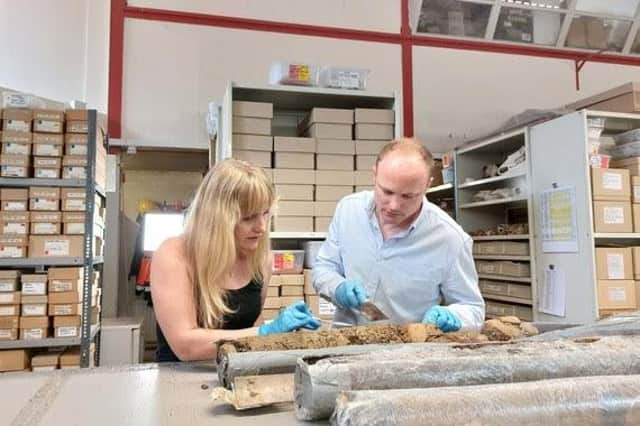Digging for Britain: Sheffield Castle’s underground secrets revealed by archaeologists on TV show


It showed how a team of geoarchaeologists have been analysing core samples around the castle, which was built at the meeting of River Sheaf and River Don, to build up more understanding of what the landscape used to look like in years gone by.
The findings from the latest archaeology work at Castlegate reveal more about the form and the position of Sheffield Castle’s moat and confirm the size and the structure of the motte.
Advertisement
Hide AdAdvertisement
Hide AdArchaeology and heritage specialists Wessex Archaeology conducted another borehole survey last summer as part of helping to inform Sheffield Council’s redevelopment plans.
Milica Rajic, infrastructure director at Wessex Archaeology, says: “By analysing sediments from the borehole core samples we have been able to add more to the existing knowledge and provide a greater understanding of the history of Sheffield Castle.
“We’re excited that our work has helped to pinpoint in more detail how the people who built this impressive castle may have exploited the natural gradients and river channels the landscape offered.”
Archaeologist and Digging for Britain presenter Dr Cat Jarman, visited Wessex Archaeology’s labs to find out more.
Advertisement
Hide AdAdvertisement
Hide Ad“This is such an exciting example of how science can reveal the nature of a site that is otherwise completely lost to us. Sheffield Castle was once an imposing part of the local landscape and finding evidence of its substantial motte helps us understand the castle’s role in the city’s development,” she said.
Specialists at the company conducted investigations last summer to aid Sheffield Council’s redevelopment plans at the castle.
Councillor Julie Grocutt, co-chair of the council’s Transport, Regeneration and Climate Policy Committee, said: “It has been so exciting to learn more about the secrets of Sheffield Castle, the birthplace of our city, throughout this project.
"As we progress with our plans to reinvigorate Castlegate and look towards the future, it’s fascinating to find out more about its origins and our city’s history.”
Advertisement
Hide AdAdvertisement
Hide AdSheffield Castle was a Royalist stronghold during the English Civil War. Such was its strength and reputation, Parliament ordered for it to be completely destroyed in 1646.
The castle’s site was later covered by a mixture of steelworks, slaughterhouses and pubs until market complexes were built in the 1920s and 1950s.